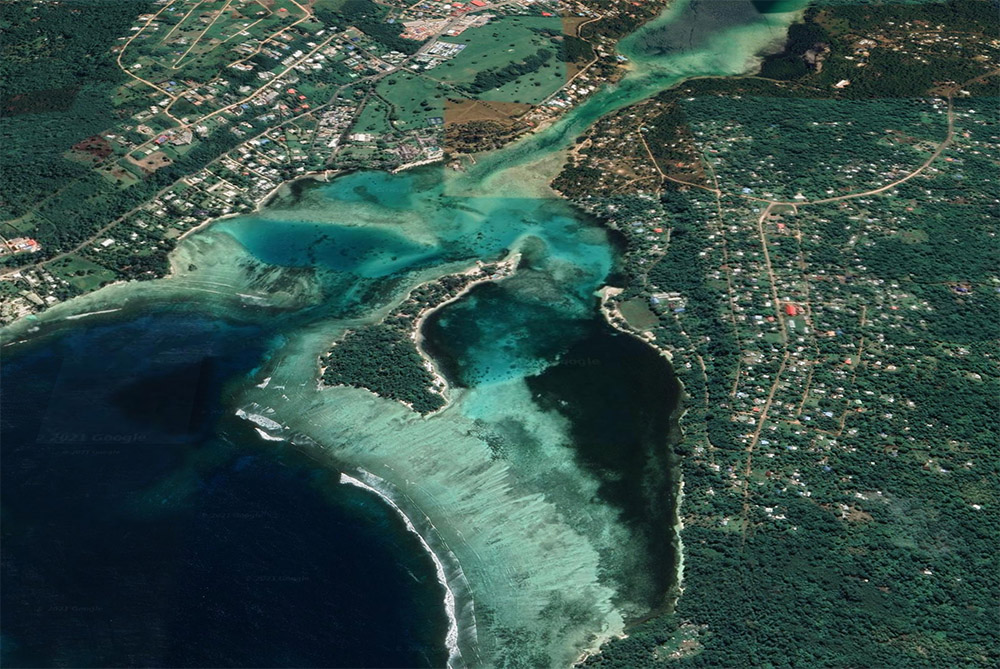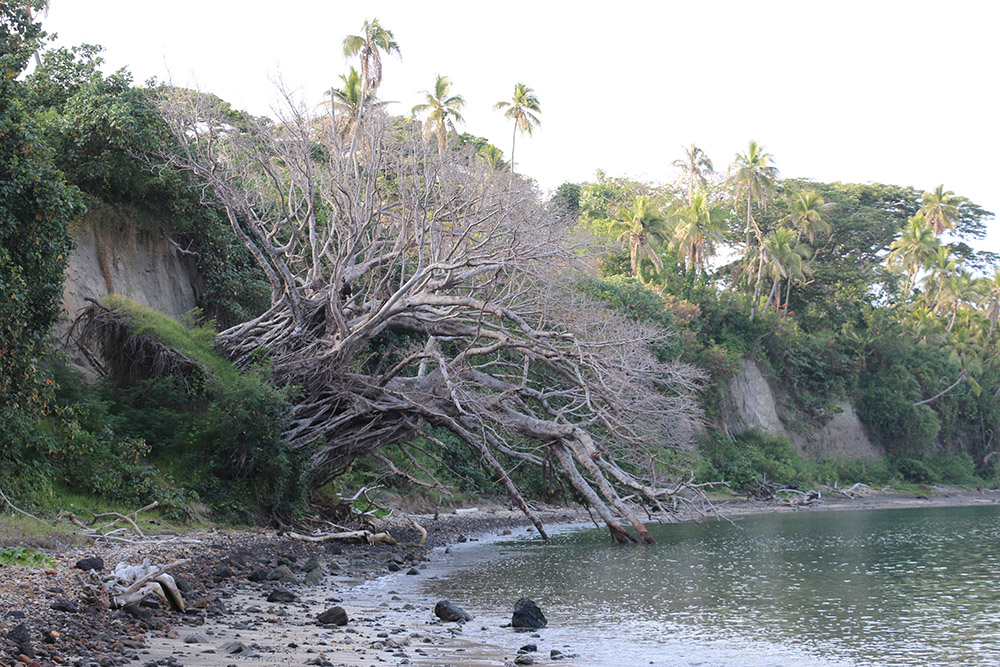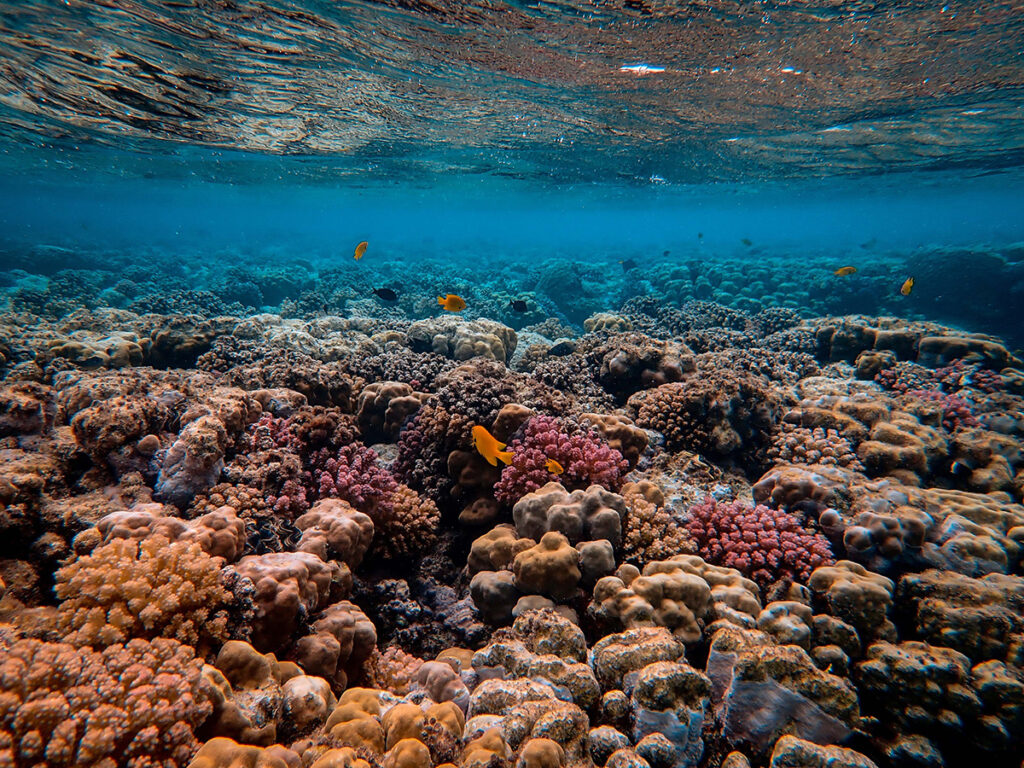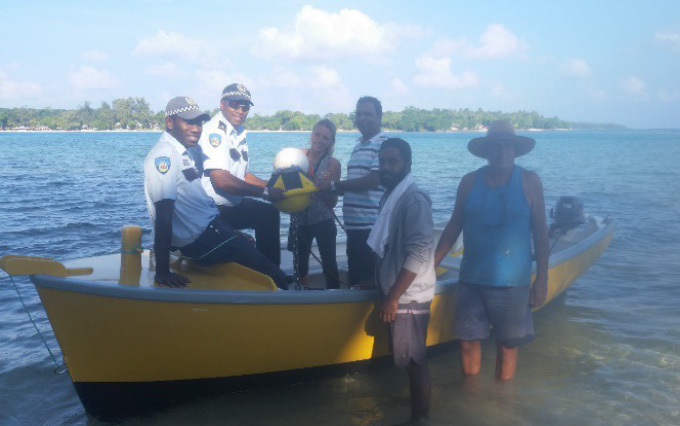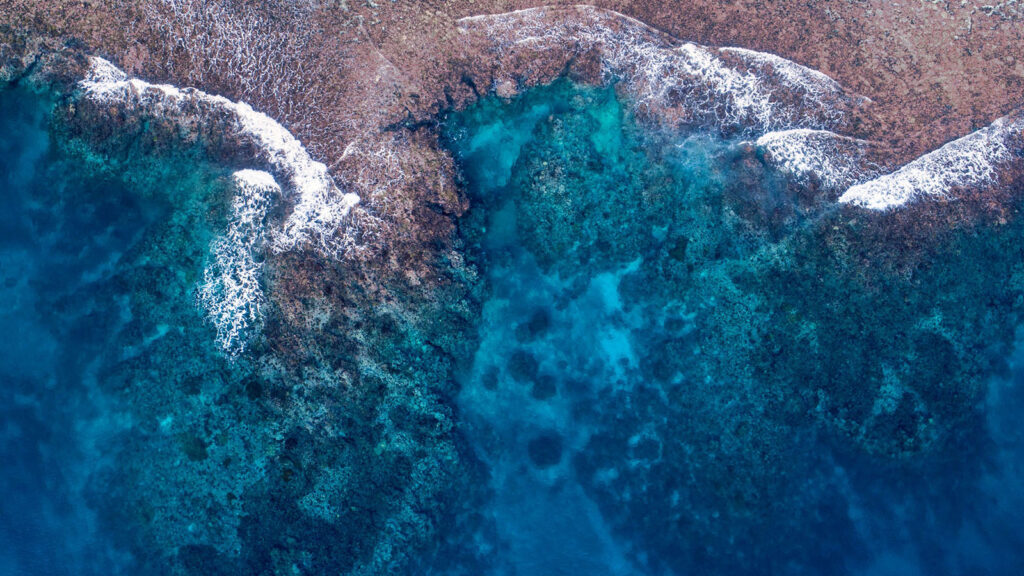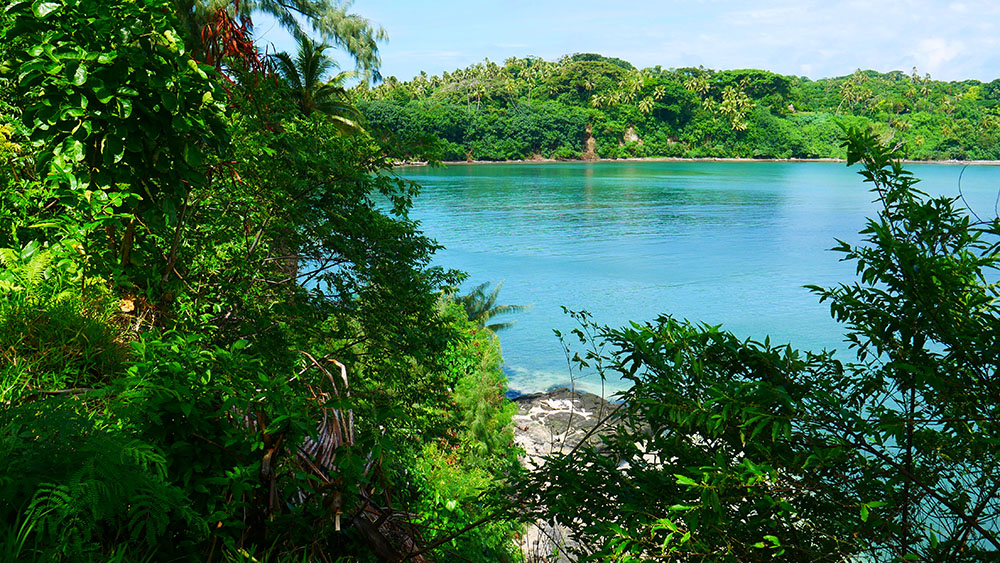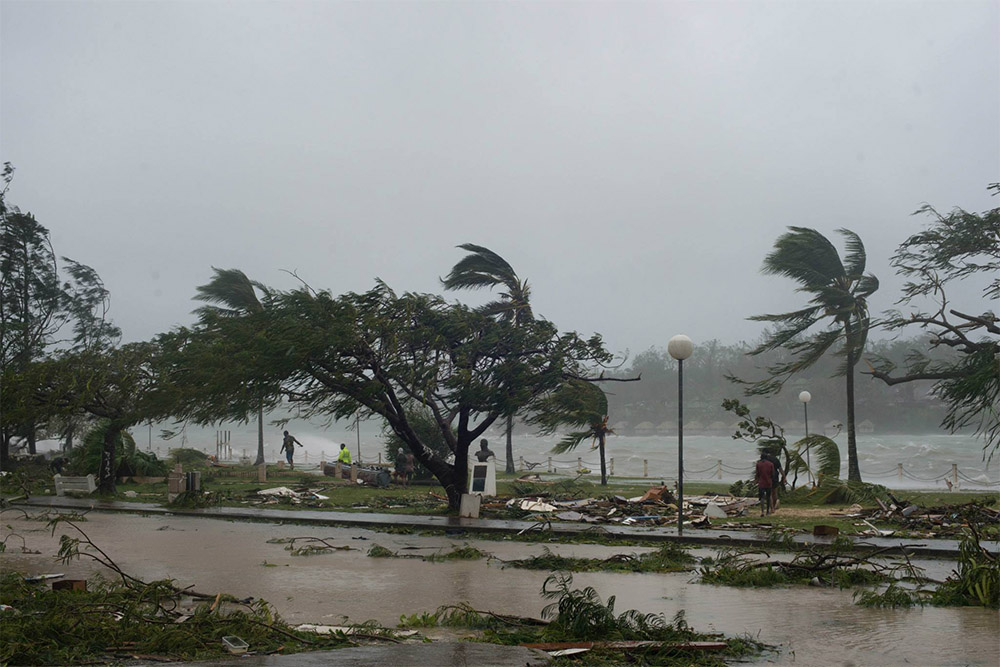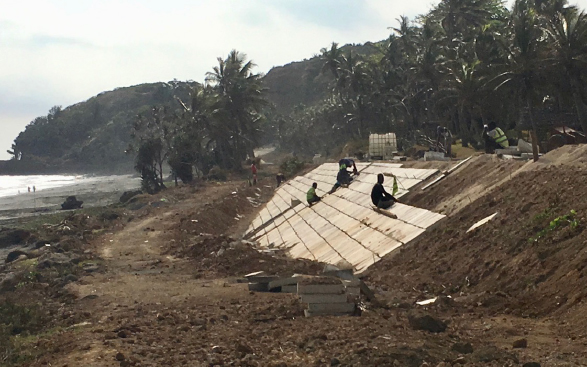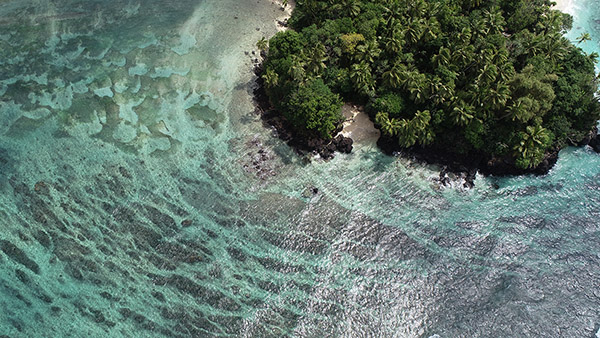
Coastal processes
Understanding ocean circulation, wave, reef and climate interactions in the coastal zone
Understanding coastal processes
Understanding the processes and interactions in the coastal zone in Pacific SIDSSIDS Small Island Developing States are a distinct group of 38 UN Member States and 20 Non-UN Members/Associate Members of United Nations regional commissions that face unique social, economic and environmental vulnerabilities. is critical to assessing current and future risks from climate change. Larger scale ocean currents interact with coastal and inshore features such as reefs, rocky shores and beaches to uniquely shape the landscape. By understanding how these processes work at different scales, and then overlaying projected scenarios of climate change, communities, planners and other decision-makers can be more informed about the options available to them in adapting to climate change in their local areas.
Identifying climate risks and hazards
Firstly it is necessary to understand the existing hazards and risks for the coastal zone and how these might be exacerbated under different climate change scenarios. Table 1 below shows identified climate risks for the case study area of Tanna Island, Vanuatu including water quality and nutrient runoff, erosion from storm events, ocean acidification, sea-level rise, and development pressures around the coastal zone.
| Hazard | Hazard indicator | Mapping | Impacts | Vulnerability | Exposure |
|---|---|---|---|---|---|
| Increase in nutrients entering coastal waters | Water quality from adjacent catchment | Catchment population density | Algal blooms and reduced sunlight. Crown of thorns starfish population increases and kills coral | Lack of alternative food supply; competition from growing tourist demand for seafood; lack of formal, or breakdown in customary reef management; customary connection to place | Location of reef relative to densely populated areas |
| Over-harvesting of grazing fish | Population pressure on reef | Area of reef per person from the local area | Algal growth covers and kills corals | Communities with the lowest area of reef per person are most exposed | |
| Erosion damage during storm events | Proportion of community lands prone to erosion | Area of unstable shoreline as a proportion of community lands | Loss of assets, loss of land which increases pressure on remaining land | Communities with the largest proportion of lands in areas of shoreline stability are most exposed | |
| Ocean acidification | pH level of water | There are no currently available data to show variation around Vanuatu and Tanna | Causes breakdown of the coral structures | All of Vanuatu and Tanna | |
| Sea level rise | Sea surface temperature | There are no currently available data to show variation around Vanuatu and Tanna | Reduces UV radiation | Depth of reef | |
| Capital works | Projection of future demand for tourism developments | Tourism development potential and local tourism attractions | Tourism development damages coral reef or alters coastal system | Location relative to tourism development |
This figure shows the identified risks and hazards mapped to the Tanna island coastal zone across four risk levels - low through to extreme. See the ESRAM Final Report for detailed results.

Fringing coral reef analysis for Tanna Island showing four risk indicators mapped in four categories of low to extreme
Building a knowledge base for understanding coastal processes
Local variability of ecosystems and interactions between them and global systems such as the hydrological cycle, ocean currents and temperature are necessary to take into consideration when identifying current and future climate risks and hazards and therefore in identifying appropriate responses. But assessing coastal hazards in the South Pacific is challenging as limited local scale data is accessible. To better understand both present-day and future conditions in the marine environment and the coastal zone, Griffith University researchers conducted ecosystem assessments at both the national scale (Vanuatu) and island scale (Tanna).
One of the challenges Pacific SIDs face when trying to develop adaptation and mitigation strategies to limit the impact of sea level rise and climate change on coastal communities, is a lack of understanding regarding the variability of sea level and sea temperature. Satellite observations and global ocean models can provide data, however their coarse spatial and temporal resolution are unable to predict how the ocean processes influence water levels, currents, and water temperatures within coastal waterways and at island shorelines. As a consequence, there is a gap in our understanding of how climate change will impact SIDS at the scales necessary to make informed land and marine management decisions.
As part of the EcoAdapt project this gap in understanding was addressed by developing a regional ocean model capable of replicating the behaviour of complex jets and currents in the deep ocean, to allow modelling high-resolution near-coast tidal circulation including sea level variability around individual islands. Simulations were also run to identify areas where currents will alter under different predicted sea levels and wind velocities expected under different climate change scenarios.
Results from numerical experiments show that ocean processes driven by the complex regional circulation, significantly affect coastal water levels in this oceanographically dynamic region. That is, the position of high water, which affects a location's exposure to coastal hazards such as high wave events and storm surge, shifts in response to the presence of jets and currents flowing in deep water.
The information produced in this model is vital in understanding how changes in ocean processes will increase or decrease the vulnerability of a site to both coastal hazards and future sea levels.
Above: Ocean circulation model around the Pacific islands of Vanuatu.
Local study sites were selected for higher resolution investigations focussing on coastal hazards: Port Resolution in the south-east of Tanna Island, and Mele Bay and Erakor Lagoon on Efate Island. These sites all face increased exposure to coastal hazards under future climate conditions, however the principal hazards affecting the sites differ. In this way we gain a more representative understanding of the different threats faced by coastal communities across the region. New numerical modelling tools were created to better replicate coastal circulation at specific study sites, as well as across the Vanuatu region more broadly. Field campaigns were undertaken, to provide valuable site-specific data to verify modelling efforts, in addition to providing baseline information describing water quality and marine ecosystem health.
The studies under this theme have improved knowledge of circulation within coral reef lagoons and helped to better understand the implications for water quality of waste water management as a critical threat to coral reef ecosystems.
Key findings and recommendations from the coastal processes studies
The following activities should be undertaken to support EbAEbA Ecosystem-based adaptation - an adaptation approach to climate- and environmental-change which primarily deploys ecosystems and ecosystem functions to mitigate risks from hazards. at the local and regional level:
- A program of data collection in Pacific SIDS to support understanding coastal processes. Permanent wave buoys should be deployed across the islands to complement the wave hindcast developed as part of Australian Aid funded Pacific‐Australia Climate Change Science and Adaptation Planning Program (PACCSAP). The wave buoy data is essential to validate the wave hindcast model and to then be used for wave climate projections.
- Data collection should always involve local residents to build local capacity and knowledge, but also to support care and protection of any measurement equipment.
- Development of fine numerical models to understand local processes where possible and develop a strategy of adaptation
- Enhancement and protection of natural defences to reduce coastal risks. Encouraging communities to work with nature and prevent activities that could damage the natural defences like dredging a reef, removing vegetation or sand. Provide local trainings and community engagement by sharing knowledge on coastal adaptations.
In Port Resolution:
- Implement regular surveys of the cliff and uplifting. The measures need to use the same reference point to measure sea level variations. Monitoring that includes regular updating of the satellite altimetry including vertical land motion assessments based on both altimetry and the tide-gauge data (ALT-TG) estimates and any continuous GPS . Bathymetry and Topography need to be measured on a regular basis particularly in Tanna where the uplifting rate is relatively high.
- Stabilise the cliff with vegetation and discuss options with the community for potential relocation of the school on the top of the cliff due to the high instability
In Erakor lagoon:
- Continue a long-term program of monitoring in partnership with the Water Department, with the ultimate aim to improve water quality indicators
